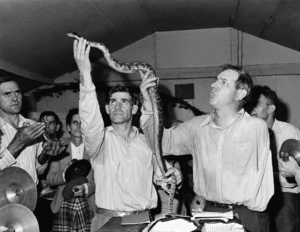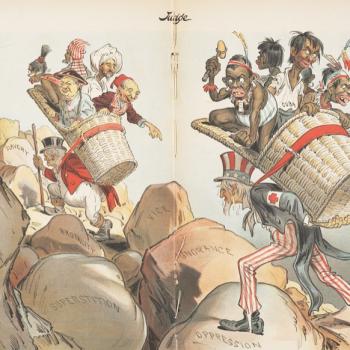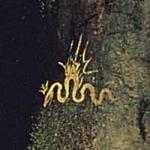 Snake handling churches are back in the news after a Kentucky man died from a rattle snake bite at a recent worship service. If this piece of news failed to show up during your daily Internet browsing, your sources might be insufficiently cosmopolitan.
Snake handling churches are back in the news after a Kentucky man died from a rattle snake bite at a recent worship service. If this piece of news failed to show up during your daily Internet browsing, your sources might be insufficiently cosmopolitan.
If there is any religious practice in America that receives smirks from both secularists and educated believers alike, it is this curious practice from the Southern foothills of Appalachia. Today, there are an estimated 125 snake-handling churches from the Virginias down to Alabama.
The practice is believed to have originated in rural Tennessee in the early twentieth century among certain Holiness churches who brought a no-holds-barred literalist reading to New Testament passages such as Mark 16: 17-18: “And these signs shall follow them that believe: In my name shall they cast out devils; they shall speak with new tongues. They shall take up serpents; and if they drink any deadly thing, it shall not hurt them; they shall lay hands on the sick, and they shall recover. Or, Luke 10:19: “Behold, I give unto you power to tread on serpents and scorpions, and over all the power of the enemy: and nothing shall by any means hurt you.” (To my knowledge, scorpion handling has never taken off.)
If you’ve never been tempted to feel the Spirit by picking up snakes, you might pick up an excellent book by Dennis Covington, Salvation on Sand Mountain: Snake Handling and Salvation in Southern Appalachia. He might not make you a true believer, but as an outsider observing the practice (and even participating at one point) Covington offers up probing empathetic inquiry, not dismissive condescension. You might also consider watching a National Geographic special, “Snake Salvation,” which also provides an inside glimpse into snake-handling spirituality.
The history of snake handling fascinates. But so too does the history of its legality. Today, it is actually illegal in all of the states where it is practiced with the single exception of West Virginia–the legislature and courts of which presumably consider it a point of honor that their understanding of religious freedom extends this far. By sharp contrast, after a seven-year old died of the practice in rural Georgia in 1941, the Peachtree State made it a felony punishable by death under certain circumstances. (This was never enforced and the severity of the punishment led to its repeal in 1968).
But here is the point—and the rub. In the middle decades of the twentieth century, one could practice snake handling freely in West Virginia while in Georgia it, theoretically, could cost you your life—from the state not the snake, though presumably from the latter too. Very different takes on the scope of religious freedom!
The recent Obergefell (2015) and Hobby Lobby (2014) Supreme Court decisions have concentrated the mind of the nation on the permissible boundaries of religious freedom and the relationship of this liberal good to other ones. Historically, the federal solution has been to grant states much latitude in cases involving religious freedom given how central this notion has been to the history and identity of the nation. But precedents from the past help explain the present only until the moment that they cease to do so.












